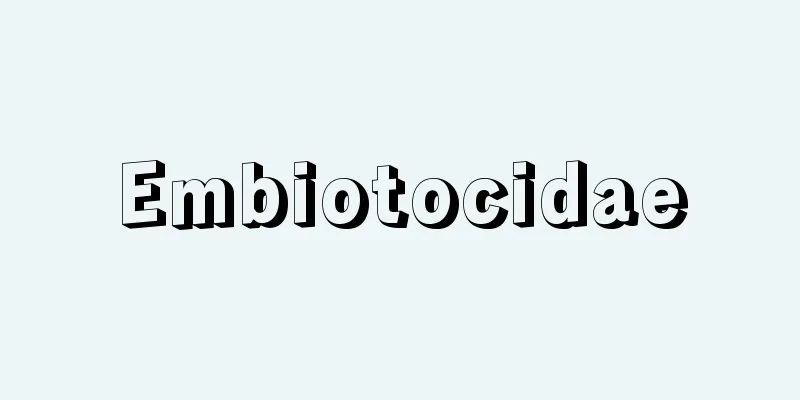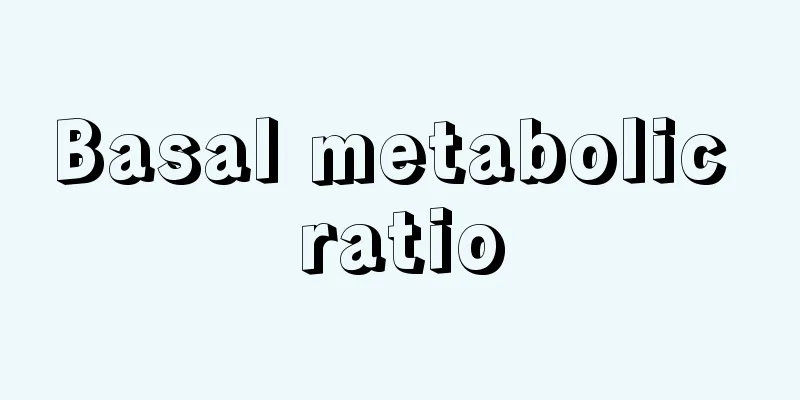Collagen - Collagen (English spelling)

|
Collagen is a protein that constitutes animal bones, cartilage, tendons, skin, etc., and 28 types are known to exist, including 19 types of types I to ⅩⅨ. Although each type has a different distribution and function, types I to Ⅳ are the major types. Type I is found in skin, tendons, and bones, type II in cartilage and vitreous body, type III in skin, lungs, vascular system, etc., and type IV in basement membranes. Collagen is one of the scleroproteins (albuminoids), but unlike keratin, it has poor extensibility and exists in a fibrous form to form a structural continuum and help cells form tissues with each other. It is the most abundant protein in vertebrates, accounting for about one-third of the total. It has a molecular weight of about 300,000. It is insoluble in water, dilute acid, dilute alkali, organic solvents, etc. When boiled for a long time in water, dilute acid, or dilute alkali, it denatures into the soluble induced protein gelatin (glue). For this reason, it is also called collagen substance. Its constituent amino acids are mostly proline, hydroxyproline, and glycine, and few sulfur-containing amino acids. It is characterized by containing about 10% hydroxyproline, which is not present in ordinary proteins. It is difficult to degrade with normal proteases, but is degraded by collagenase, which is specific to collagen. A collagen molecule consists of three polypeptide chains of the same or different species. These polypeptide chains are formed into a left-handed helix, and three of these are woven together to form a right-handed helix, forming a triple helix. In this triple helix, glycine is present every three residues, and a repeating structure of (Gly-XY) n is seen, with proline entering X or Y, and hydroxyproline entering Y. Under an electron microscope, it appears as a striated structure. Different arrangements are seen depending on the function of each connective tissue. In tendons, they are arranged in parallel bundles, forming a very strong structure, and in skin, they form an interwoven network that is layered in layers. In addition to its function as a structural protein (a protein that forms and maintains structures and morphology in the body), it is also involved in cell adhesion, cell proliferation, and differentiation as a major component of the extracellular matrix. Diseases caused by collagen abnormalities include osteogenesis imperfecta, Ehlers-Danlos syndrome (joint and skin abnormalities), and Menkes syndrome (kinky hair, growth retardation). [Michiko Iijima] "Kubouki Yoshinori et al., 'Collagen, the next generation protein -- from the mystery of animal origins to bio-organs' (1986, Kodansha)" ▽ "Matsunaga Tadashi and Motomiya Tatsuya (eds.), 'Interesting stories of new biomaterials' (1990, Nikkan Kogyo Shimbun)" ▽ "Hayashi Toshihiko, 'Can the human body regenerate? -- exploring the mechanism of cell design and assembly from collagen' (1991, McGraw-Hill Publishing)" ▽ "Takeichi Masatoshi and Miyasaka Masayuki (eds.), 'Cell adhesion molecules -- the full picture of their biological functions' (1996, Tokyo Kagaku Dojin)" ▽ "Kimura Shigeru (ed.), supervised by the Japanese Society of Fisheries Science, 'Extracellular matrix of fish and shellfish' (1997, Koseisha Koseikaku)" ▽ "Fujimoto Daizaburo, 'Uncovering the secrets of collagen -- from food and cosmetics to biomaterials' (1998, Shokabo)" ▽ "Natural and Biopolymer Materials for the 21st Century" edited by Miyamoto Takeaki et al. (1998, CMC) " ▽ "The Story of Collagen" by Fujimoto Daizaburo (1999, Tokyo Kagaku Dojin)" ▽ "Fish and Shellfish Muscle Proteins - Their Mechanisms and Functions" edited by Nishida Kiyoyoshi, supervised by the Japanese Society of Fisheries Science (1999, Koseisha Koseisha)" ▽ "Illustrated Trivia: The Mechanism of Aging and Lifespan" by Fujimoto Daizaburo (2001, Natsumesha)" ▽ "The Science of Food - With a Focus on Marine Foods" edited by Suzuki Yoshitaka and Takahashi Yukinori (2001, Seizando Shoten)" ▽ "The Formation of Kamaboko Legs - The Role of Seafood Membrane Proteins and Enzymes" edited by Seki Nobuo and Ito Yoshiaki, supervised by the Japanese Society of Fisheries Science (2001, Koseisha Koseisha)" ▽ "The Amazing Nucleic Acid Balance Produced by Collagen" edited by Masashi Matsunaga and Koji Usumi (2002, Success Marketing)" ▽ "Talking about Collagen, Beauty and Health" by Kunio Shirai (2002, Jugeishobo)" ▽ "Harper's Biochemistry, 28th Edition, by R.K. Murray et al., translated and supervised by Yoshito Kamishiro and Takao Shimizu (2011, Maruzen)" ▽ "Bone Health Science" by Yasushi Hayashi (Iwanami Shinsho) [References] | | | | | | | | | |Source: Shogakukan Encyclopedia Nipponica About Encyclopedia Nipponica Information | Legend |
|
動物の骨、軟骨、腱(けん)、皮膚などを構成するタンパク質で、Ⅰ~ⅩⅨ型の19種を含む28種の存在が知られている。それぞれ分布や機能が異なるが、このうちⅠ~Ⅳ型が主要な型である。Ⅰ型は皮膚、腱、骨に、Ⅱ型は軟骨、硝子体、Ⅲ型は皮膚、肺、脈管系など、Ⅳ型は基底膜に存在する。コラーゲンは硬タンパク質(アルブミノイド)の一つであるが、ケラチンと異なり伸展性に乏しく、繊維状で存在して構造上の連続体をつくり、細胞相互で組織を形成するのを助ける。脊椎(せきつい)動物中もっとも多く含まれるタンパク質で、全体の約3分の1を占める。分子量約30万。水、希酸、希アルカリ、有機溶媒などに不溶。水、希酸、希アルカリで長時間煮沸すると、可溶性の誘導タンパク質ゼラチン(膠(にかわ))に変性する。このため、膠原質(こうげんしつ)ともよばれる。構成アミノ酸はプロリン、ヒドロキシプロリン、グリシンが多く、含硫アミノ酸が少ない。なかでも一般のタンパク質には存在しないヒドロキシプロリンを約10%も含むことが特徴である。通常のプロテアーゼによって分解されにくく、コラーゲンに特異的なコラゲナーゼによって分解される。コラーゲン分子は3本の同種あるいは異種のポリペプチド鎖よりなる。これらのポリペプチド鎖が左巻きの螺旋(らせん)状になり、さらにこれが3本集まって右巻きの螺旋状に織り合わされてできた三重螺旋構造をとっている。この三重螺旋部分には3残基ごとにグリシンが存在し、(Gly-X-Y)nの繰り返し構造がみられるが、プロリンはXまたはYに、ヒドロキシプロリンはYに入る。電子顕微鏡下では横紋構造に見える。各結合組織の機能により異なった配列の仕方がみられ、腱(けん)では平行な束として配列し、非常に強固な構造をとっており、皮膚では織り合わされた網をつくって、これが何層にも重なっている。このような構造タンパク質(生体内で構造・形態などを形成・保持するタンパク質)としての機能のほかに、細胞外マトリックスの主成分として細胞の接着および細胞の増殖や分化などに関与している。コラーゲンの異常による疾患には、骨形成不全症、エーラス‐ダンロス症候群(関節や皮膚の異常)およびメンケス症候群(ねじれた毛髪、成長遅延)がある。 [飯島道子] 『久保木芳徳他著『次世代タンパク質コラーゲン――動物の起源の謎からバイオオーガンまで』(1986・講談社)』▽『松永是・本宮達也編著『おもしろいバイオ新素材のはなし』(1990・日刊工業新聞社)』▽『林利彦著『人の体は再生できるか――コラーゲンからさぐる細胞の設計・組立のメカニズム』(1991・マグロウヒル出版)』▽『竹市雅俊・宮坂昌之編『細胞接着分子――その生体機能の全貌』(1996・東京化学同人)』▽『日本水産学会監修、木村茂編著『魚介類の細胞外マトリックス』(1997・恒星社厚生閣)』▽『藤本大三郎著『コラーゲンの秘密に迫る――食品・化粧品からバイオマテリアルまで』(1998・裳華房)』▽『宮本武明他編『21世紀の天然・生体高分子材料』(1998・シーエムシー)』▽『藤本大三郎著『コラーゲン物語』(1999・東京化学同人)』▽『日本水産学会監修、西田清義編『魚貝類筋肉タンパク質――その機構と機能』(1999・恒星社厚生閣)』▽『藤本大三郎著『図解雑学 老化のしくみと寿命』(2001・ナツメ社)』▽『鈴木喜隆・高橋幸則編著『食の科学――水産食品を中心にして』(2001・成山堂書店)』▽『日本水産学会監修、関伸夫・伊藤慶明編『かまぼこの足形成――魚介肉構成タンパク質と酵素の役割』(2001・恒星社厚生閣)』▽『松永政司・宇住晃治監修『コラーゲンが導く驚異の核酸バランス』(2002・サクセスマーケティング)』▽『白井邦郎著『コラーゲンと美容・健康を語る』(2002・樹芸書房)』▽『R・K・マレー他著、上代淑人・清水孝雄監訳『ハーパー生化学』原書28版(2011・丸善)』▽『林泰史著『骨の健康学』(岩波新書)』 [参照項目] | | | | | | | | | |出典 小学館 日本大百科全書(ニッポニカ)日本大百科全書(ニッポニカ)について 情報 | 凡例 |
<<: Collage - ko-ra-ju (English spelling) collage French
Recommend
Aubrietia
...A cold-tolerant perennial plant of the Brassic...
Trolley-pole
...Later, overhead lines became single-wired, ele...
Trans-Australian railway
...The Russian government hurried up the construc...
Kaieteur Falls - Kaieteurtaki
Kaieteur Falls is a waterfall in central Guyana. I...
Dorotheanthus bellidiformis (English spelling)
... In horticulture, they can be broadly divided ...
Kuramae Need - Kuramae Need
〘Noun〙 In the Edo period, Takakakarimono (high-ran...
Enlightenment - Kaigen
〘Noun〙 (from the meaning of opening the eyes of a ...
Tunnel Diode
A diode that uses the tunnel effect. It is also c...
Bishop Museum - Bishop Museum
The Bernice Pauahi Bishop Museum, officially named...
Theatre de l'Odéon (English name)
...After Napoleon III granted freedom to found th...
Périgord (English spelling)
The name of the region in the southwest of France,...
Utsumi [Hot Spring] - Utsumi
...Industry production is also growing, centering...
Le Cid (English spelling)
A play by the French playwright Corneille. A tragi...
masque
...Representative composers include W. Byrd (1543...
Large water plantain - Large water plantain
...It is distributed in the temperate and subtrop...









